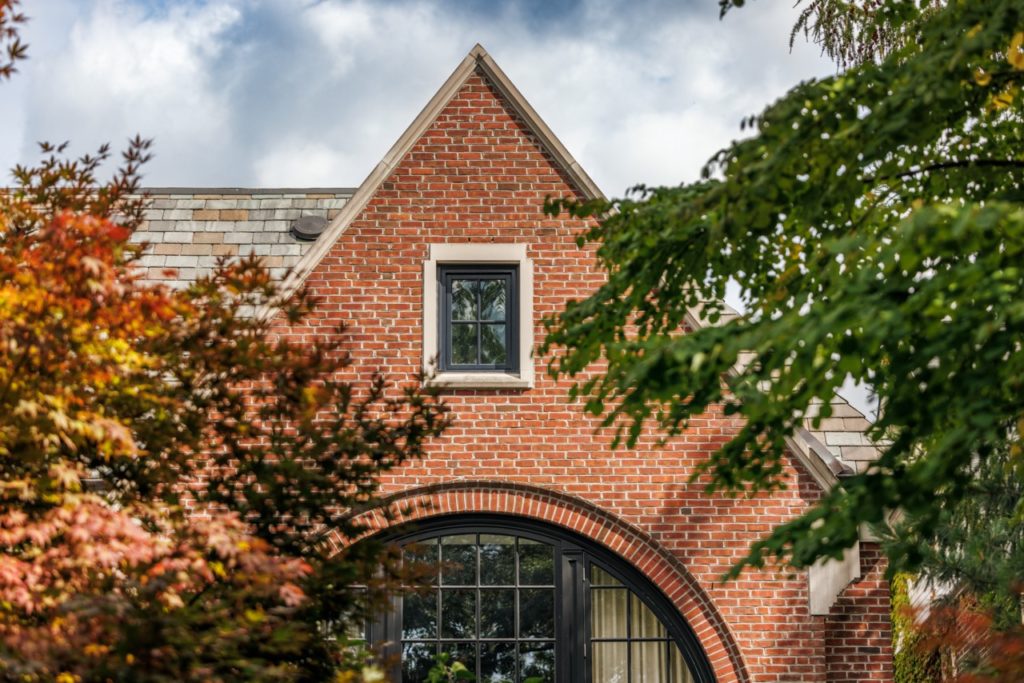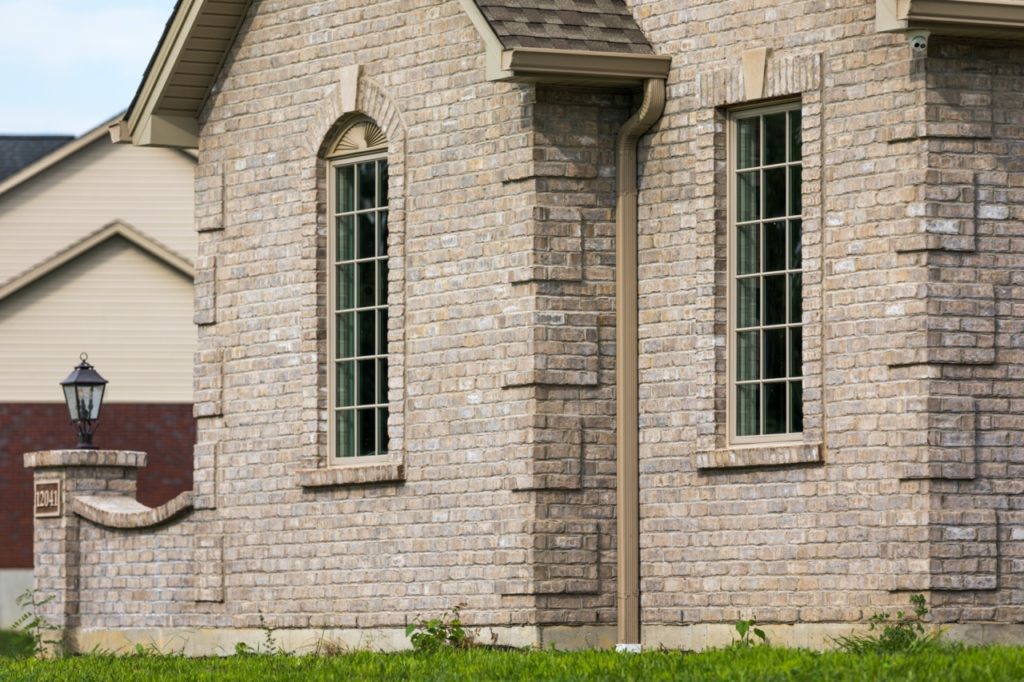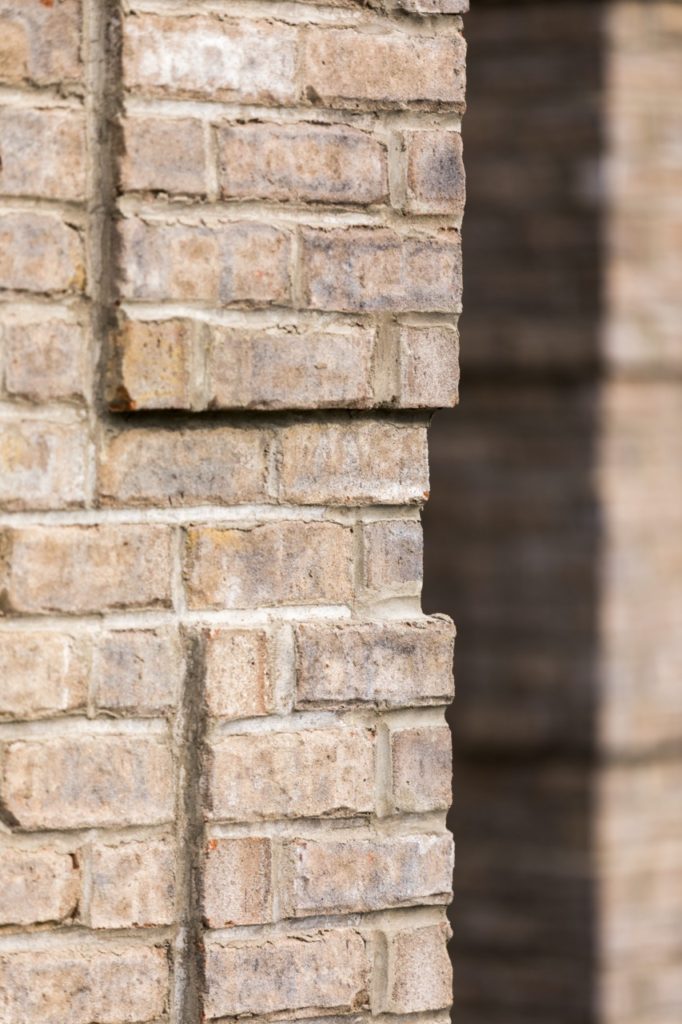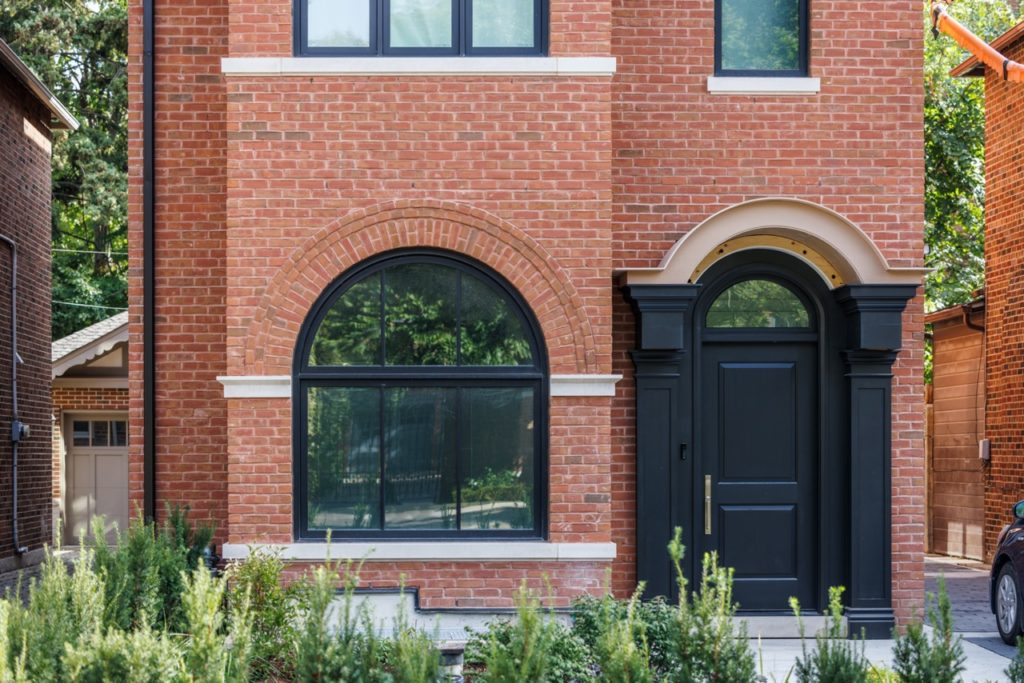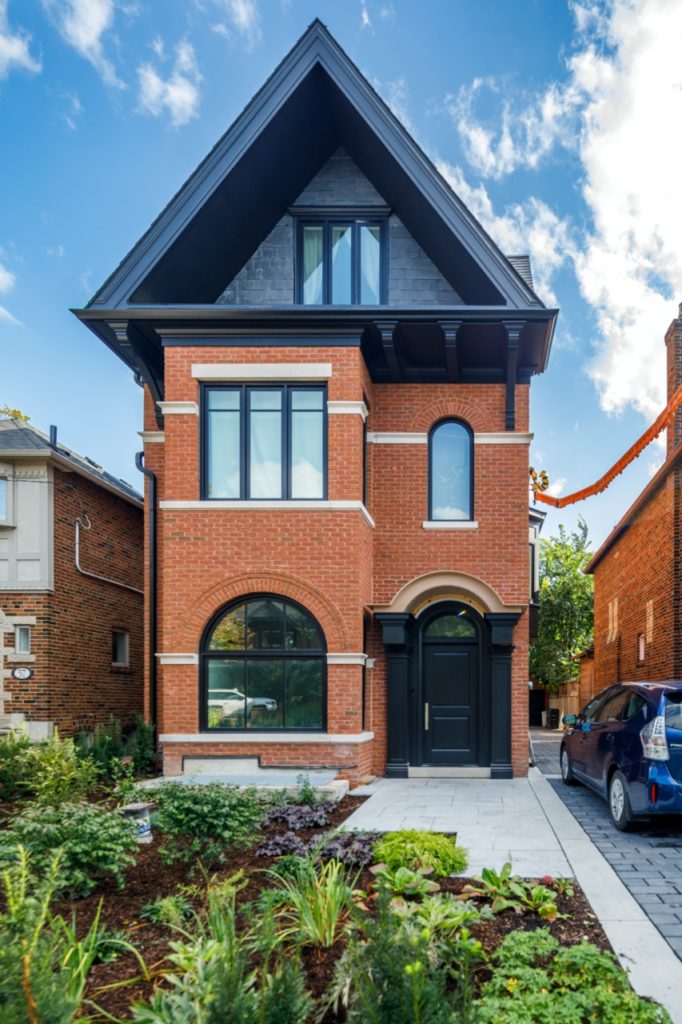Words: Tim Leese, Director of Marketing at Glen-Gery
Photos: Glen-Gery
While brick masonry is one of the oldest construction techniques still used today, its versatility, beauty, sustainability and durability have ensured its popularity through the years. Over the centuries, the use of brick has evolved to create a wide breadth of unique designs that balance functionality and artistry.
Brick’s many distinguishing details and available shapes, textures and finishes give architects, builders and designers nearly endless ways to create impactful patterns on the exterior or interior of a home. Brick lends itself to numerous design profiles because it can be bonded in a variety of texture patterns, it can be molded or finished to fit specific space needs, it’s available in a range of shapes, and even the mortar itself can be incorporated into the palette.
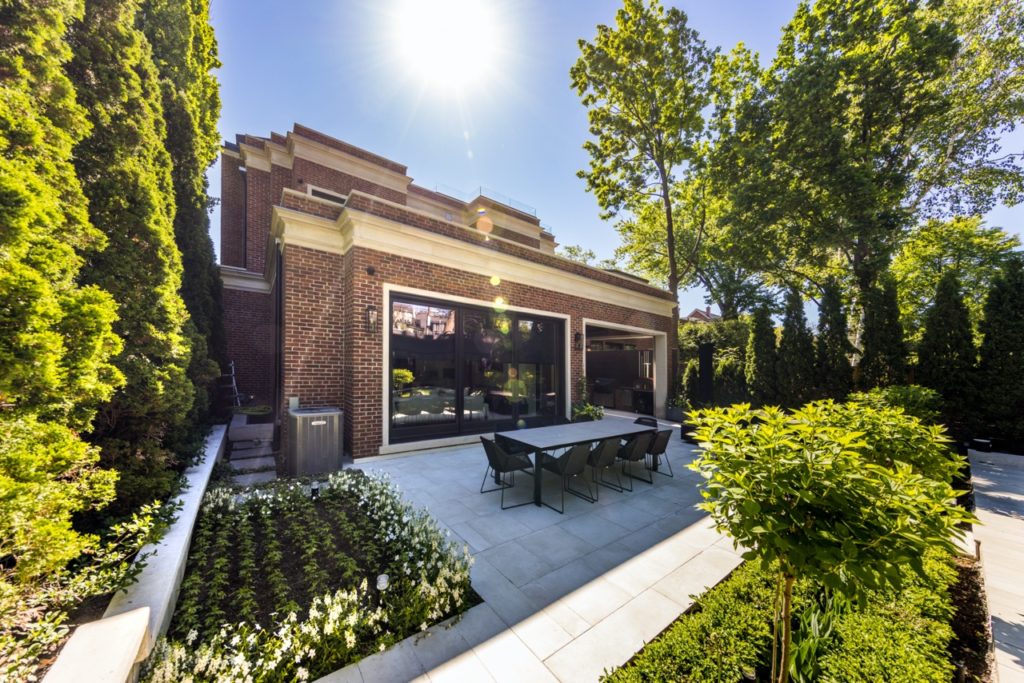
From historical structures to modern homes, brick is a versatile design element that can act as the foundation or the focal point (or both!), depending on how it is used.
Popular Texture Patterns with Brick
Brick can be used to create texture patterns that are both tactile and visual through different bonding methods. Brick bonding, or the pattern in which the bricks are laid, functions to distribute weight throughout the structure but can also exhibit creative design.
To use texture effectively, first, define the largest source of texture. Too much texture can create a busy, crowded look. For example, a brick accent wall, fireplace, exterior column or other point of convergence could serve as your largest source of texture. Depending on the size of the project, one-to-two distinct texture patterns should suffice.
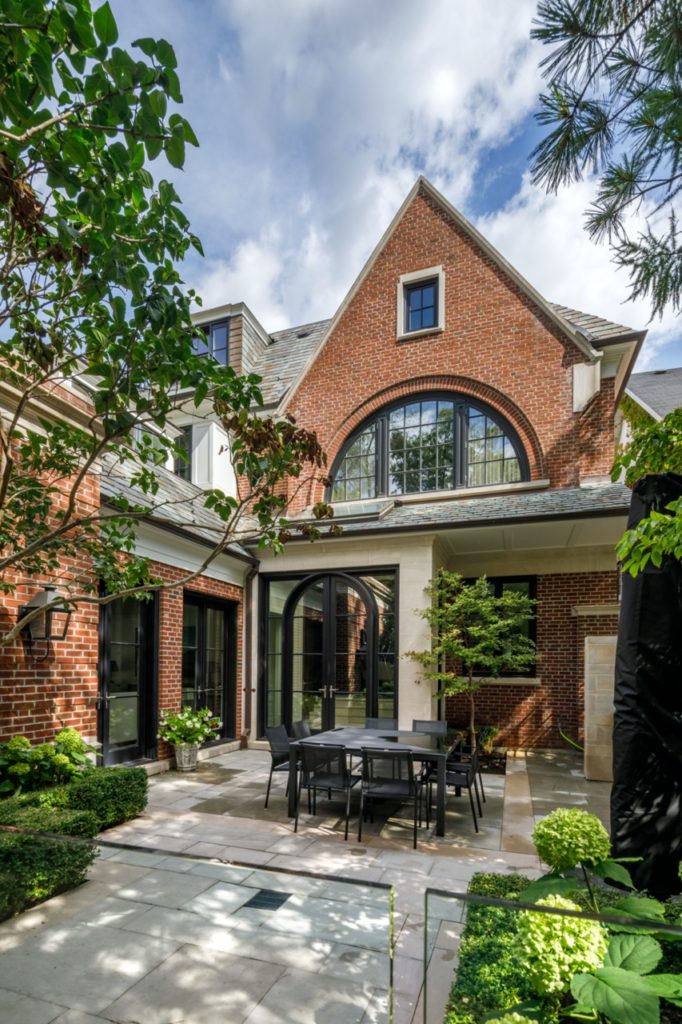
The following bonding methods each offer a balance of functionality and form and can give a project a distinct look.
- Running Bond: the most popular bonding pattern, used for basic wall construction. It consists of stretchers offset by ½ brick per course. (Think of your standard brick wall.)
- Flemish Bond: does not alternate layers but instead shifts them. Each row is completed with alternating full-sized and header bricks. This slight deviation from the running bond adds more visual interest.
- English Bond: layered with running bond, the contrast occurs with alternating courses of headers and stretchers.
- Common Bond: similar to the English or Running bond, but incorporates headers inserted every five to six layers.
- Stacked Bond: places emphasis on the vertical aspect of masonry, this bond can be created with either stretcher or header bricks. Stacked bonds would typically be used in a nonstructural capacity.
- Herringbone Bond: resembles a zigzag pattern. This decorative type of raking bond conceals layers of diagonally laid brick to bond exposed bricks to the wall.
How to Use Brick Detailing
Brick detailing refers to styles of patterns used to arrange bricks around other design elements. Architects, designers and builders may incorporate brick details around windows, doorways or as an archway. Complementary brick detailing adds visual interest while maintaining a cohesive look.
The following brick detailing styles are commonly used to accent homes.
- Soldier Course and Rowlock: “soldier course” refers to bricks laid standing up with the narrow edge exposed. Imagine soldiers standing at attention. A rowlock is a course of brick laid on its long side with the short end of the brick exposed. You may find soldier course and rowlock detailing along a window or door sill.
- Quoins: is a decorative style used to accentuate the corner of a building with short side header bricks and long side stretcher bricks. This design can also be achieved with stone blocks to add more texture and contrast. Expect to see quoins protruding around the corners of a home or on decorative columns.
- Corbel: this complex style adds dimension by projecting out from a wall. Corbels are also built to bear weight and may be used with features like balconies. Corbel detailing often appears in corbelled arches, decorative curved elements in the corners of an opening.
Types of Brick Shapes
Brick is available in an extensive selection of shapes like extruded, molded and handmade brick to compose unique architectural elements. The diversity of brick shapes allows architects, designers and builders to use brick in both functional and aesthetic roles.
Here are some of the common shapes of bricks and how these shapes are typically used.
- Flat Arches: use bricks of the same size and shape with parallel sides. The voussoirs are designed with a 70° skew-back angle and 3/8” nominal mortar joint.
- Circular Arches: arches manufactured to fit the type of arch, rise, dimension of the masonry opening, thickness of the mortar joint, and radii of the arch.
- Water Tables: designed to reduce water penetration but also lend themselves to decorative design details. Water tables can be used to add dimension to flat walls, rotate to form door and window jambs, or can be inverted to create cornice brickwork.
- Sills, Copings and Treads: also designed to reduce water penetration. Sill bricks feature one rounded side, tread bricks are slimmer with one rounded side and coping bricks feature an angular side typically used for the top of a structure. Sills, copings and treads can be used on wall caps, windows and door openings.
Mortar as a Design Element
Mortar is needed for the practical purpose of binding bricks together, but it can also become an important design element by adding a subtle or definitive accent.
Use mortar as a subtle addition or definitive accent in any of the following ways.
- Mortar Color: standard mortar is usually a shade of gray, but coloring can be added.
- Match or Contrast: just like with different shades of brick, different shades of mortar can be used to either match or contrast. For example, black mortar can be used to create a dramatic outline with red or gray brick.
- Play Up Single Colors: when working with a multicolored pattern of bricks, mortar can be used to underline the primary color. Use mortar to make a wall look lighter or darker, warmer or cooler.
- Accentuate Patterns: mortar can also mirror greater architectural patterns. For example, with quoins, bands or other ornamental elements, matching mortar can create an even greater visual impact.
- Mortar Joints: defined as the filled space between bricks, can be applied in a variety of ways to complement or contrast other patterns.
- Raked joints, flat mortar joints, slightly recessed from the front edge of the brick, and flush joints, mortar that is directly level with the brick, are great options for showcasing the mortar traditionally.
- For a more textured look, you may opt for concave or groove joints, vee or v joints, or grapevine joints. These indented techniques draw more attention to the joints.
- To maximize your mortar visibility, try extruded or squeezed joints, or overmortar or “German Smear.” These styles place emphasis on the mortar as a design element and make it a focal point of the project.
Approximately twenty percent of the surface of any brick wall is mortar, do not overlook this potential canvas!
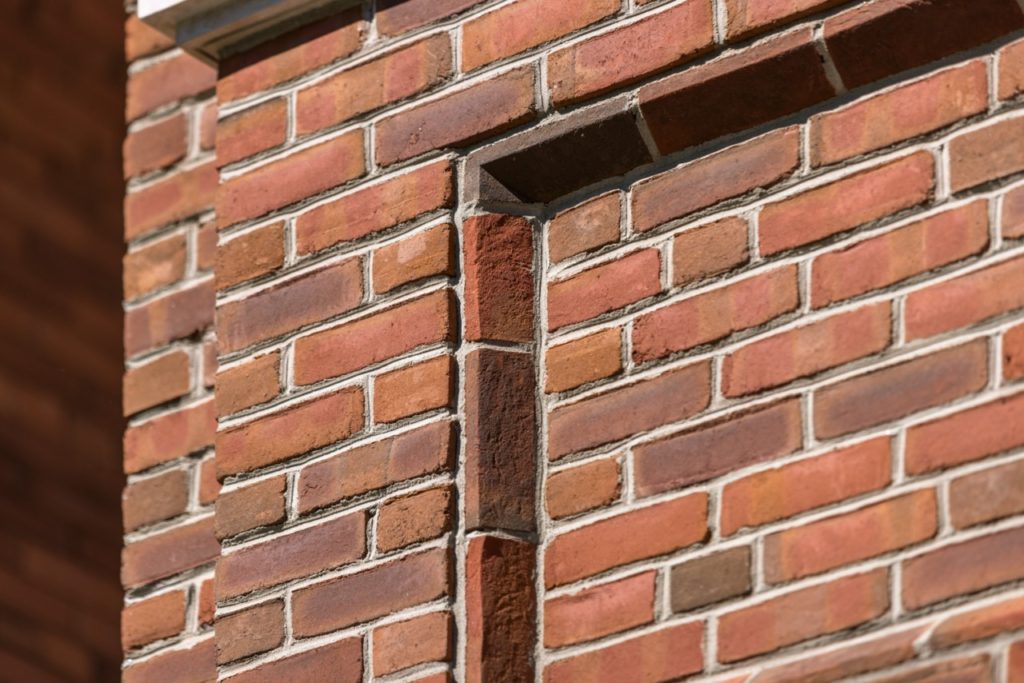
Conclusion
Brick can be used to create many unique and stunning designs both on the interior or the exterior of a building serving as a canvas for both the architect and the mason’s creativity, the balance of form and function, science and art. From the brick itself to the way it’s bonded, mortared and stacked, architects, designers and builders have numerous ways to showcase new patterns while paying homage to one of the most enduring construction materials of all time.
Different brick bonding methods can produce different texture profiles, even within the same project. Brick detailing can be used to accentuate focal points of the project. Varying brick shapes within a project can create subtle texture at points of convergence throughout a project. The mortar color and application technique itself offer another palette to complement and contrast the brick itself.
Access Glen-Gery’s Virtual Design Tool Here
